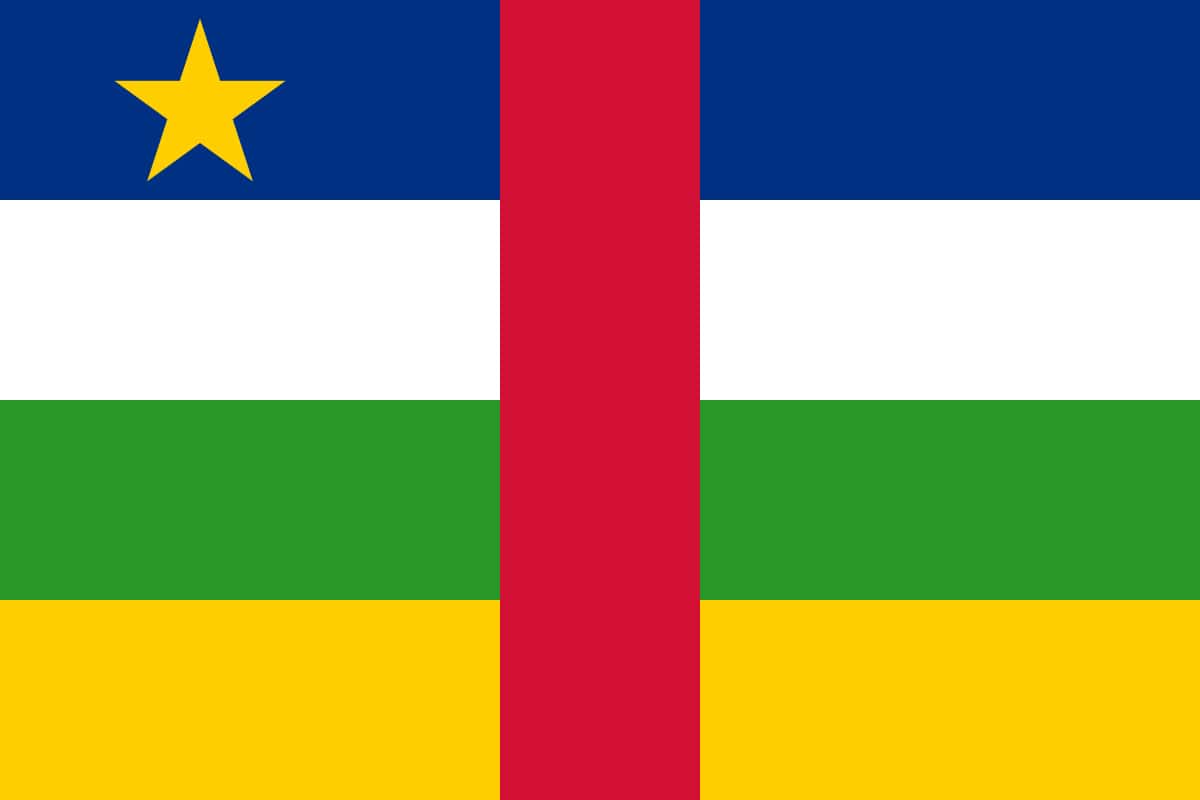
40 interesting facts about Central African Republic
- 👁️ 303
The Central African Republic (CAR), a landlocked country located at the heart of the African continent, is a nation with a rich cultural heritage and abundant natural resources. Despite its significant potential, the country has faced numerous challenges over the years, including political instability, conflict, and poverty. However, the resilience of its people and the country’s natural beauty, from dense forests to vast savannas, continue to offer hope for a brighter future. The Central African Republic is a mosaic of communities, languages, and traditions, each contributing to the rich tapestry of the nation. Here are 40 interesting and informative facts about the Central African Republic that shed light on its history, geography, culture, and more.
- The Central African Republic gained independence from France on August 13, 1960.
- It covers an area of approximately 620,000 square kilometers, making it slightly smaller than Texas.
- The country is landlocked, bordered by Chad, Sudan, South Sudan, the Democratic Republic of Congo, the Republic of Congo, and Cameroon.
- The capital city is Bangui, located on the banks of the Ubangi River.
- CAR has one of the lowest population densities in Africa, with vast areas of uninhabited wilderness.
- There are more than 80 ethnic groups in the country, each with its own language and traditions.
- The official languages are French and Sango, the latter being a creole developed as a lingua franca among different ethnic groups.
- Despite its name, the geographical center of Africa is slightly to the east of the country.
- CAR is rich in natural resources, including diamonds, gold, uranium, and timber.
- The country is part of the Congo Basin, home to the second-largest rainforest in the world after the Amazon.
- The Dzanga-Sangha Special Reserve is known for its large population of forest elephants, western lowland gorillas, and bongo antelopes.
- Manovo-Gounda St Floris National Park is a UNESCO World Heritage site, recognized for its diverse ecosystems and wildlife.
- CAR’s flag features four horizontal stripes of blue, white, green, and yellow with a vertical red stripe in the middle and a yellow five-pointed star in the upper left corner.
- The country’s motto is “Unité, Dignité, Travail” (Unity, Dignity, Work).
- The Central African Republic is one of the world’s least developed countries, according to the United Nations.
- It has one of the lowest life expectancy rates globally.
- The Pygmy peoples, some of the world’s oldest communities, reside in CAR’s forests.
- The national dish is “boule,” a type of starch ball made from cassava or plantain, often served with sauce.
- Football (soccer) is the most popular sport in the country.
- CAR has a significant Muslim minority, mainly in the northern regions, while the rest of the country predominantly practices Christianity or indigenous beliefs.
- The country has been plagued by political instability and conflict since independence, impacting its development.
- CAR’s music is a blend of African rhythms, French influences, and modern genres.
- The Bangui Magnetic Anomaly, one of the largest geomagnetic anomalies on Earth, is located in the country.
- CAR is a member of the African Union, the United Nations, and the Organization of Islamic Cooperation, among other international organizations.
- The country’s legal system is based on French law and customary law.
- The Sangha River is an important waterway, part of the larger Congo River basin.
- CAR is home to several endemic species, including the Central African slender-snouted crocodile.
- The country’s highest point is Mount Ngaoui, standing at 1,420 meters (4,659 feet).
- Traditional arts and crafts in CAR include pottery, basketry, and weaving.
- The Gbaya people are the largest ethnic group in the country.
- CAR’s economy heavily depends on subsistence agriculture and mining.
- The country is part of the Economic Community of Central African States (ECCAS).
- Cotton, coffee, and tobacco are among CAR’s main agricultural exports.
- The Central African Republic observes Independence Day as a national holiday on August 13th.
- Bangui hosts one of the largest markets in Central Africa, offering a wide range of goods.
- The Zande people are known for their elaborate wooden sculptures and masks.
- The country experiences a tropical climate with a rainy season from May to October and a dry season from November to April.
- CAR has been working with international organizations to improve healthcare, particularly in combating malaria and HIV/AIDS.
- The Central African CFA franc (XAF) is the currency used in CAR.
- Despite its challenges, the Central African Republic has been making efforts towards reconciliation and nation-building.
The Central African Republic, with its rich tapestry of cultures, languages, and traditions, stands as a testament to the resilience and diversity of its people. Despite facing significant challenges, from political instability to economic hurdles, the spirit of the nation endures, driven by a strong sense of community and hope for a brighter future. The country’s vast natural resources and breathtaking landscapes, from dense rainforests to savannas teeming with wildlife, highlight its potential as a beacon for conservation and sustainable development. As the world learns more about the Central African Republic, it’s clear that support and understanding are key to unlocking its vast potential. The journey ahead is long, but with unity, dignity, and hard work, the people of CAR are poised to write a new chapter in their country’s history, one marked by peace, prosperity, and the preservation of their rich cultural heritage.
The Central African Republic (CAR), a landlocked country located at the heart of the African continent, is a nation with a rich cultural heritage and abundant natural resources. Despite its significant potential, the country has faced numerous challenges over the years, including political instability, conflict, and poverty. However, the resilience…